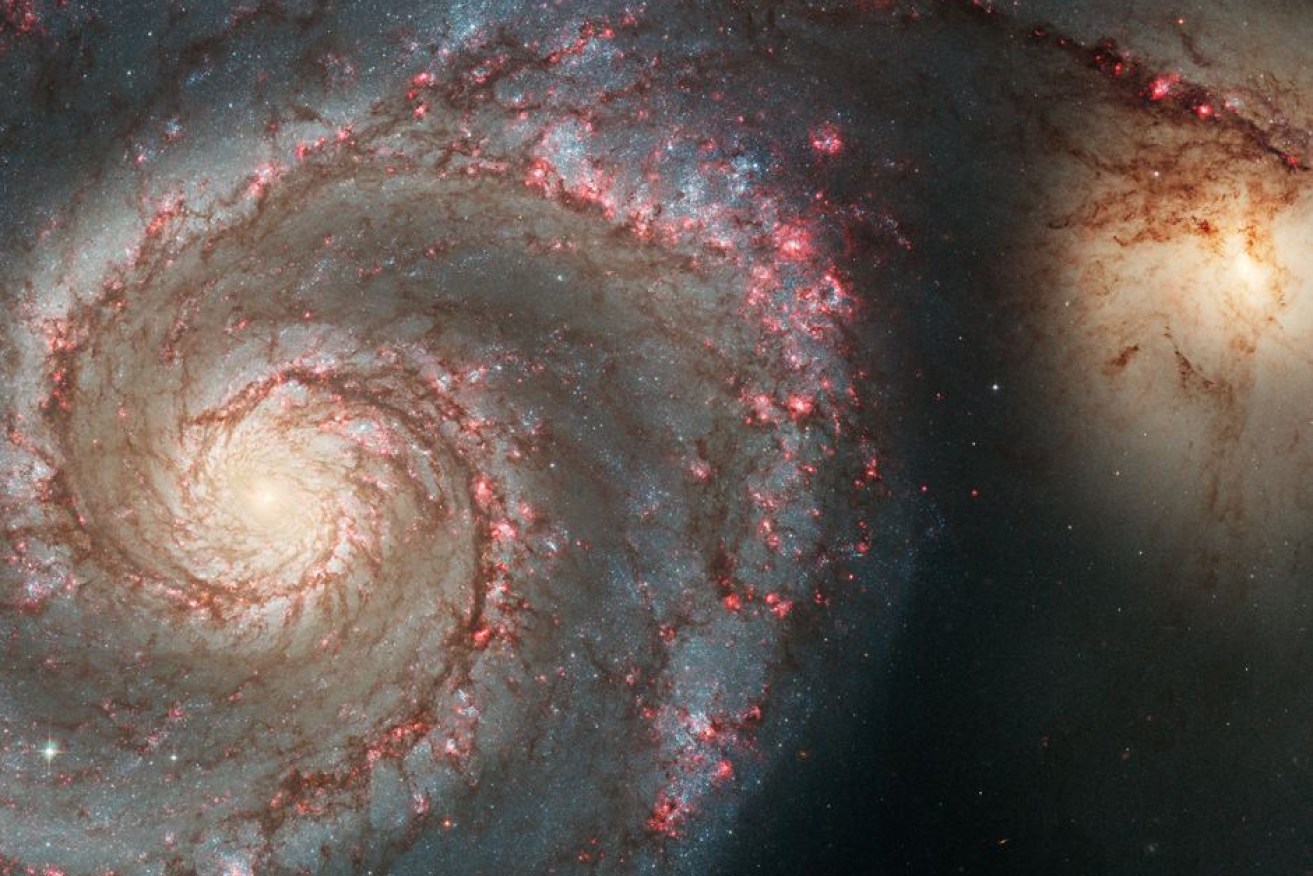Shape of galaxies could shed light on mysteries of space

Before now, scientists could really only see galaxies from one angle. Photo: NASA
What do a pancake, a sea urchin and a football have in common? According to scientists in Australia, they are all possible shapes of a galaxy.
For more than 90 years, scientists had struggled to understand how to determine a galaxy’s shape, but now they think they have cracked the code.
Caroline Foster from the University of Sydney, who was part a team of experts from around the world who conducted the research, said it could help answer some big questions.
“Now that we’re able to look at the shape of galaxies, we’re able to understand better how they formed,” Dr Foster said.
“We live in a galaxy ourselves and we know that our galaxy is quite flat because [you can tell] when you look across the sky, especially from Australia.
“The fact that our galaxy is quite flat tells us a bit about how it formed and so in a way, maybe indirectly, a little bit of where we come from.”
Dr Foster said that in time, scientists could use the information to help test out some other big astronomy theories.
“There’s a lot of literature, mostly on the theoretical side, that discusses how the three-dimensional shape of a galaxy changes as a function of what’s happened to them over the course of their life,” she said.
“These typically include dark matter in them. Dark matter is one of the mysteries of modern astronomy.
“And if you could pinpoint the true 3D shape of the dark matter behind those galaxies, that would give us a clue as to what dark matter might be.”

The shape of our own galaxy explains why the Milky Way appears as a strip. Photo: NASA
Scientists examined 845 different galaxies
The researchers were able to reach their conclusions thanks to advances in technology, which now makes it easier to visualise galaxies in three dimensions.
They primarily used a Multi-object Integral Field Spectrograph, an instrument that provides insight into how fast stars and gas are moving and in what direction.
Before now, scientists could really only see galaxies from one angle, so they were not getting the full picture.
The Multi-object IFS also allowed the scientists to study 13 galaxies at a time, amounting to a total of 845.
“The faster a galaxy spins around, the flatter it is. And so we know that the spin of the galaxies associated with things that have happened in its history for example,” Dr Foster said.
“What we have found is that most galaxies are actually like a beach ball with different degrees of ‘squashedness’.
“But we have found there is a population of galaxies as well that doesn’t have a necessarily two of its axes that are the same. So we found galaxies that are a bit more potato-shaped.”
Dr Foster said the shape of our own galaxy explains why we see a strip of stars making up the Milky Way.
“If our galaxy was more potato-like or more round, we would have stars all across the sky, not just that one strip,” she said.
The findings are published in the latest edition of the journal Monthly Notices of the Royal Astronomical Society.
-ABC








